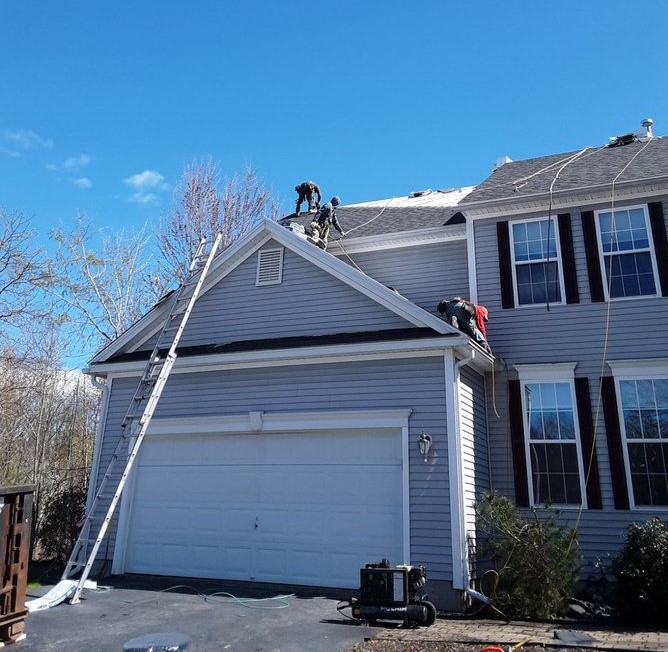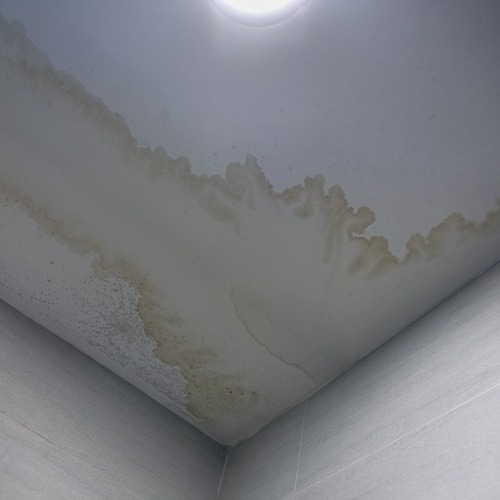The Ultimate Guide to Addressing Roof Covering Leaks and Preventing Further Damages

Usual Reasons For Roofing System Leakages
Roofing leakages can happen due to various factors, such as harmed tiles, improper installation, or clogged seamless gutters. Inappropriate setup of roof products, consisting of flashing and underlayment, can additionally lead to leakages as spaces or incorrect positioning can endanger the roof covering's capacity to push back water successfully.
Additionally, leaks might result from broken chimney blinking, skylights, or vents that have deteriorated with time. These weak spots on the roof covering can enable water to infiltrate otherwise appropriately maintained or secured. One more usual reason of roof leakages is the existence of ice dams, which create when snow thaws and refreezes at the roofing's edge, developing a barrier that protects against appropriate water drainage. Comprehending these usual causes of roof leaks is crucial for reliable troubleshooting and avoidance strategies.
Determining the Resource of Leakages
When confronted with roof covering leakages, determining the precise resource is necessary to properly attend to the problem and protect against additional damages. Determining the source of a roof leakage can be challenging as water can get in the roofing system in one location and travel prior to leaking via the ceiling in one more. To figure out the resource of the leakage, begin by examining the interior of the building. Look for water spots, mold growth, or dampness on the ceiling or wall surfaces as these are indications of a leakage over. Next off, examine the attic for signs of water invasion such as wet insulation, mold, or water stains on the rafters. Once you have determined the basic area of the leak, evaluate the roofing surface for missing out on roof shingles, broken flashing, or damaged seals around chimneys and vents. Additionally, check for any kind of indications of pooling water or debris that could be triggering water to leak under the roof covering product. By meticulously investigating these locations, you can determine the precise source of the leak and take proper procedures to fix it promptly.
DIY Repair Work Techniques
Upon determining the resource of a roofing leak, carrying look at this web-site out efficient DIY repair service techniques is vital to promptly attend to the issue and stop additional damages. One of one of the most common do it yourself repair service techniques for roofing leaks is covering visit this site right here the affected area with roof covering cement. This technique entails cleaning the area around the leak, applying a generous quantity of roof covering cement to the damaged location, and pushing a piece of roof fabric or patching material right into the concrete to create a water resistant seal.
Roofing sealant can be applied along joints, around blinking, and over small holes to protect against water from permeating right into the roofing structure. Additionally, changing harmed or missing out on roof shingles can likewise efficiently repair roof covering leakages.
Hiring Expert Help
Involving the services of experienced roof covering professionals can give expert remedies for attending to roof leakages and ensuring thorough repair work. Specialist roofing professionals bring a riches of knowledge and experience to the table, enabling them to properly diagnose the origin of the leak and give effective remedies. By employing specialists, you can benefit from specialized devices and products that may not be easily available to the ordinary homeowner. Additionally, roofing professionals are fluent in sector best methods and safety methods, ensuring that the repair service job is performed efficiently and without jeopardizing the architectural honesty of the roofing.
When choosing a professional roofer, make certain to research their credentials, experience, and credibility in the industry. Search for specialists that are licensed, guaranteed, and offer warranties on their job to ensure top quality and peace of mind. By delegating your roofing repair requires to knowledgeable professionals, you can feel confident that the work will be done right the very first time, saving you time, money, and possible migraines in the future.
Preventative Maintenance Tips
To ensure the durability and resilience of your roof, implementing positive upkeep approaches is necessary complying with the conclusion of specialist fixings by experienced roof specialists. Cut any type of looming branches to stop them from causing damages to your roofing during storms or solid winds. By complying with these preventative maintenance tips, you can lengthen the life of your roof covering and prevent costly repair services in the future - roof leak.

Conclusion
In conclusion, addressing roofing leaks promptly is vital to protect against further damages to your home. Furthermore, implementing preventative upkeep tips can help to prevent future leaks and keep the stability of your roofing.
Incorrect installment of roof products, including flashing and underlayment, can likewise lead to leakages as gaps or wrong placement can compromise the roof covering's ability to ward off water properly. An additional typical cause of roof leaks is the existence of ice dams, which create when site here snow melts and refreezes at the roof's edge, producing an obstacle that stops correct drain. Identifying the source of a roofing leakage can be difficult as water can get in the roof covering in one location and traveling prior to leaking with the ceiling in another.Upon identifying the source of a roof covering leakage, executing effective DIY repair service techniques is essential to promptly attend to the concern and prevent additional damage. Roofing system sealer can be applied along seams, around flashing, and over small holes to avoid water from leaking right into the roofing system structure.